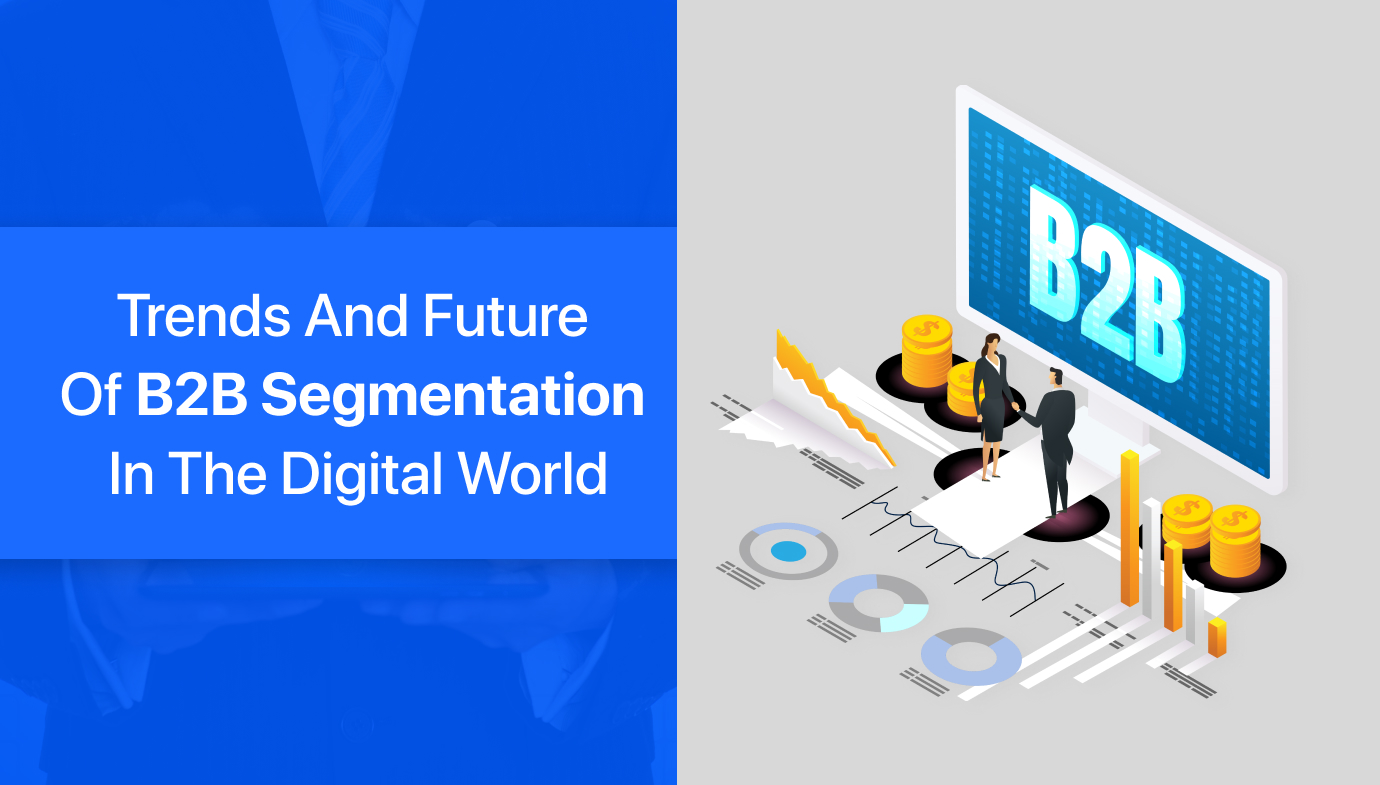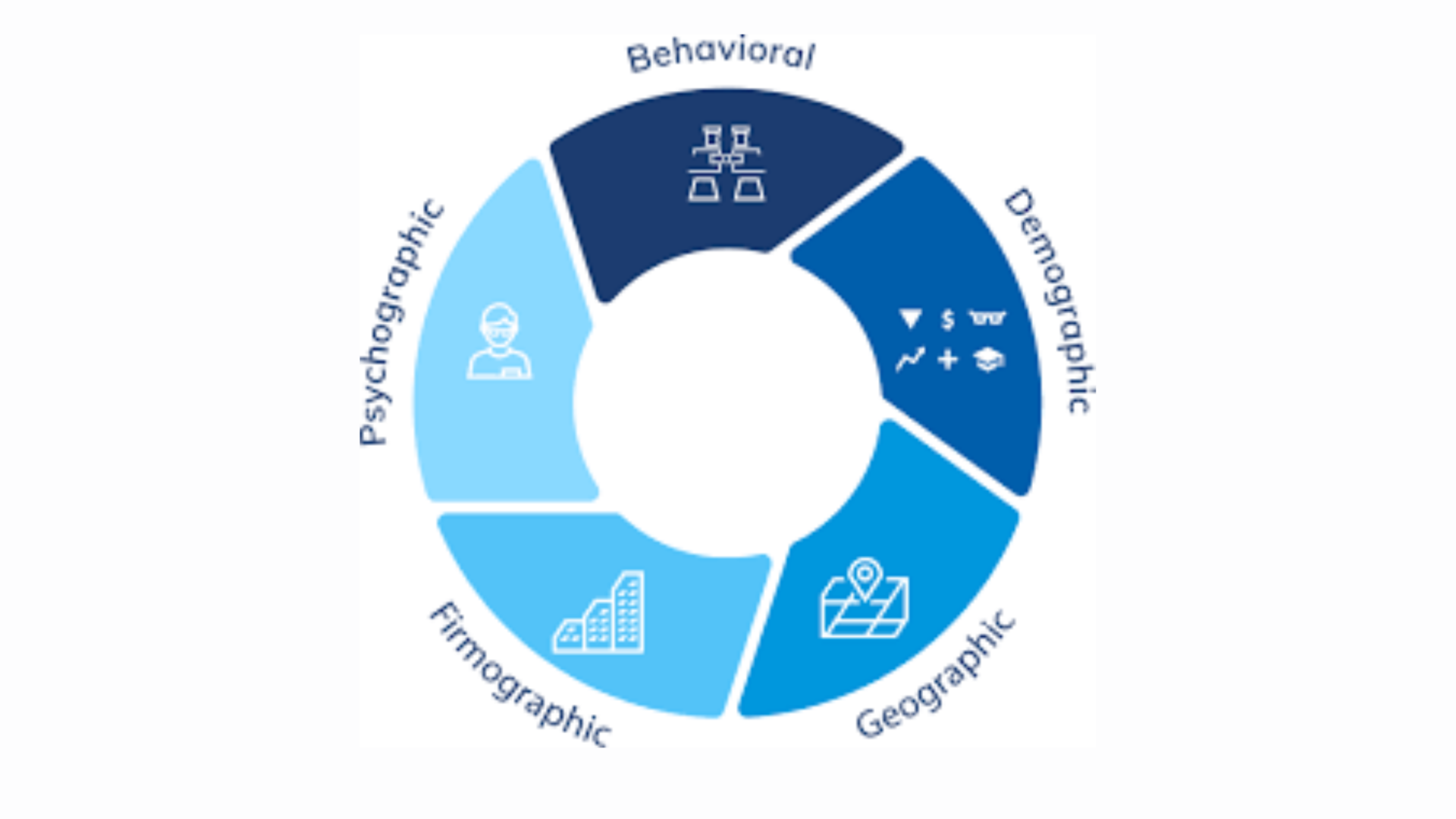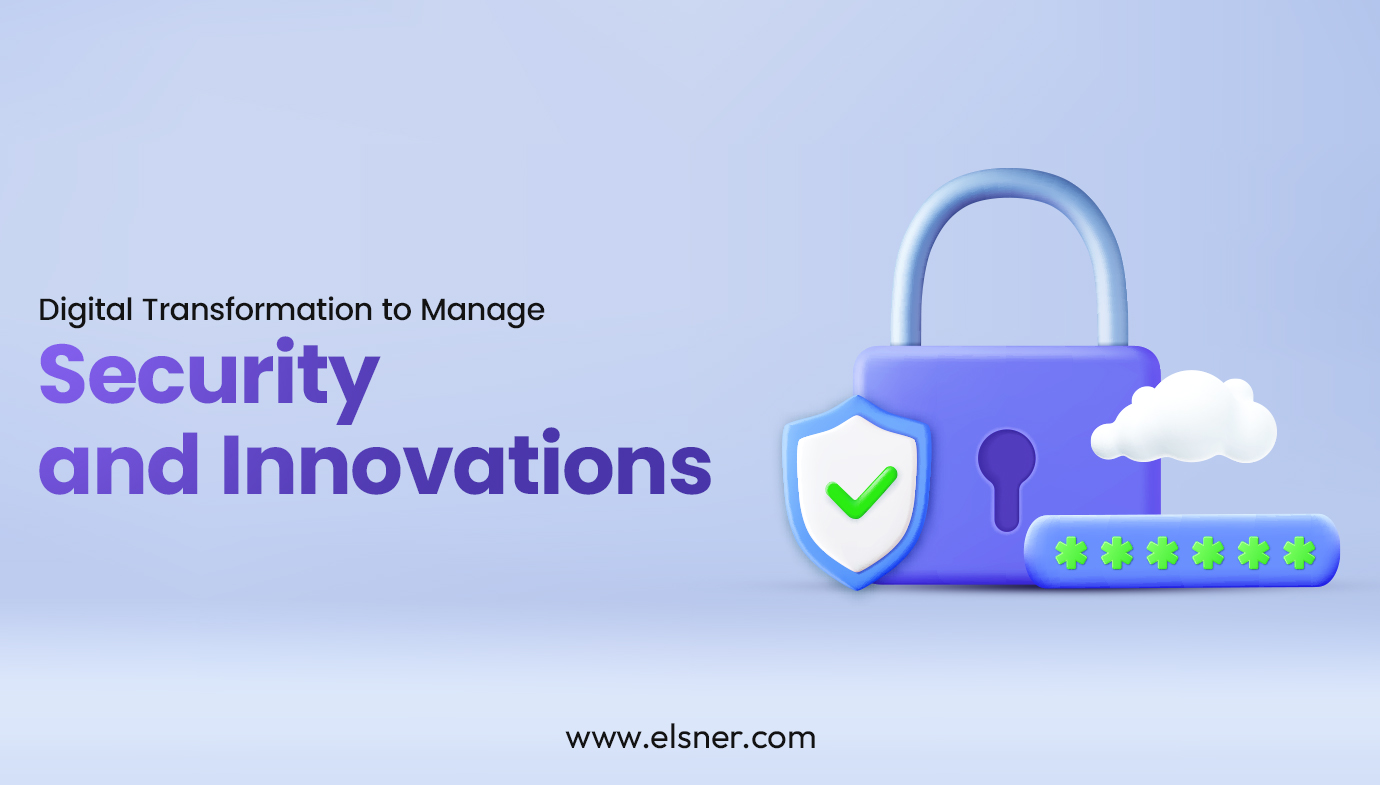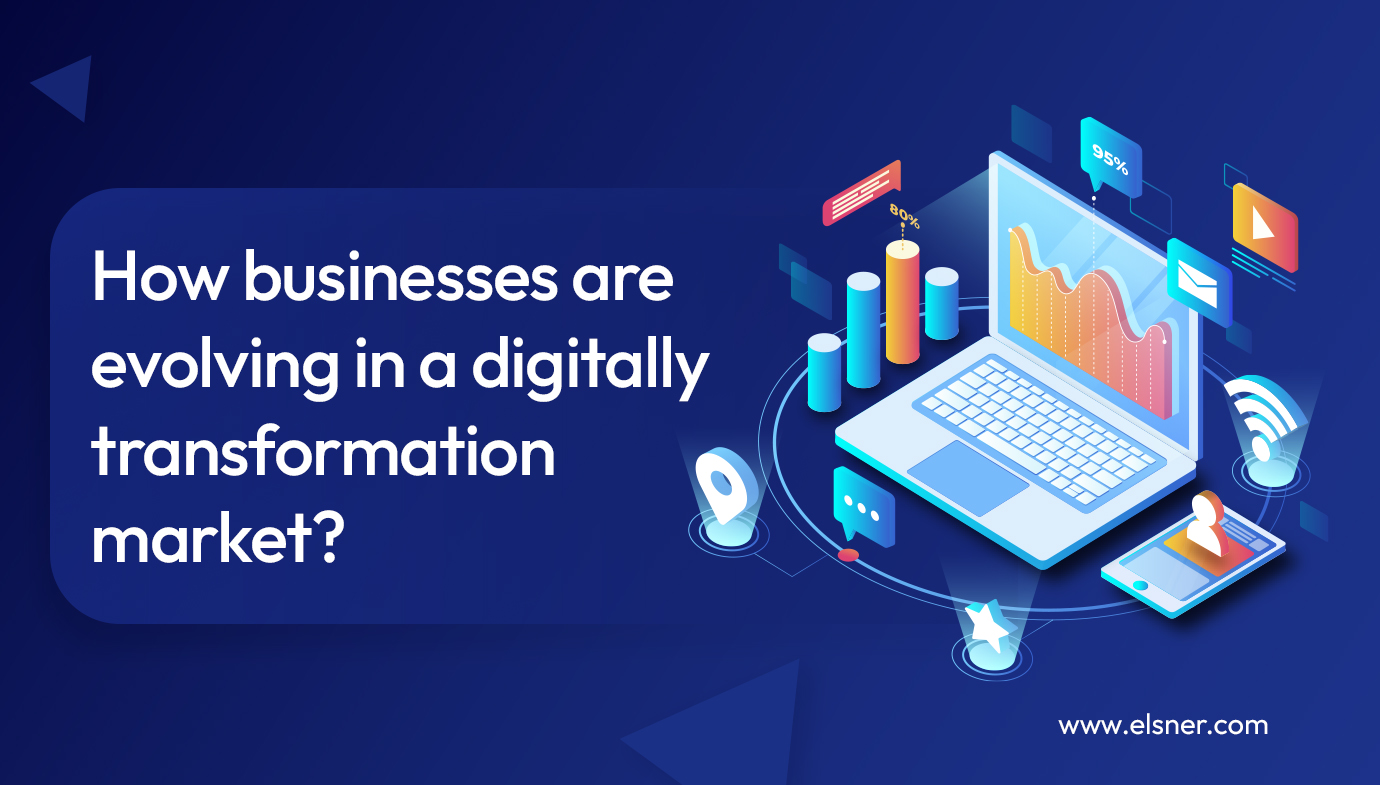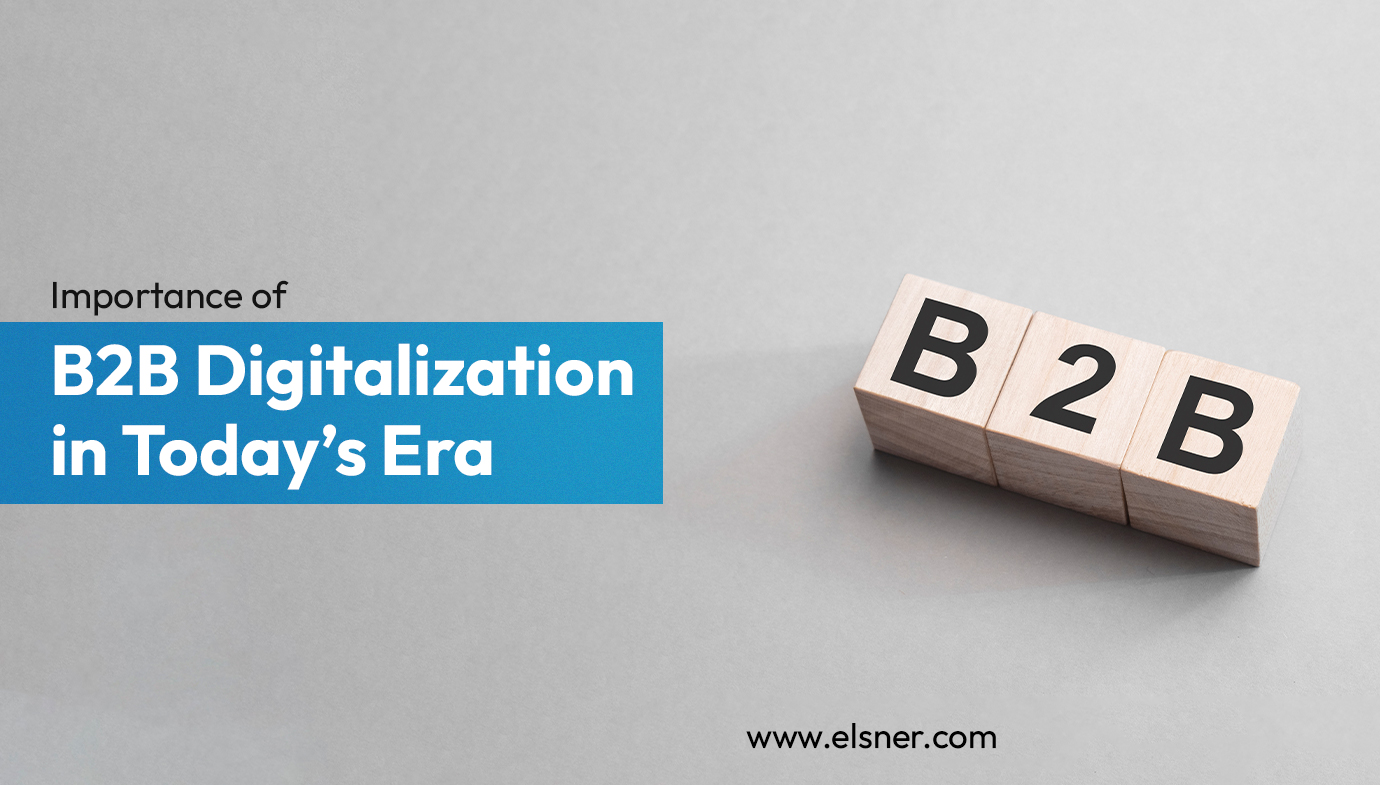Business to Business segmentation refers to dividing a market into distinct groups of customers or organizations with similar characteristics and needs. It helps companies understand their customers better and deliver more targeted products, services, and marketing strategies.
It typically involves analyzing factors such as company size, industry, geographic location, buying behaviour, and purchasing power.
The analyzing elements and segmentation enable companies to understand better and target the customers and create targeted marketing campaigns and sales strategies to point to each group.
What are The Different Types of B2B Segmentation?
[Source: https://bit.ly/3XMh5js]
For B2B organizations, there are four methods for segmenting a total addressable market: Demographic, Geographic, Psychographic, and Firmographic. Some sales and marketing campaigns use a combination of mentioned approaches for optimal user results.
Here, Let’s have a look into different segmentations:
Demographic Segmentation
This segmentation groups customers and potential customers by focusing on certain traits such as age, income, gender, occupation & family status. It’s an accessible form of market segmentation, requiring fewer data points to implement. The most common demographic segmentation factors are age, gender, income, level of education, religion, occupation, and family structure.
Demographic segmentation is primarily used for the marketing strategy as Improving personalization like A segmented market allows the presentation of the messaging to different demographic segments. The sane products can show differently according to age, income, cost-effectiveness, suitability, etc.
Demographic marketing improves product relevance as people show the product with a more relevant presentation, and it targets specific customers for the same products with different benefits. It allows you to target the appropriate customers for marketing and reduce the cost and time of marketing.
Geographic Segmentation
It is a marketing strategy that divides customers into their residences by the country they live in or smaller group divisions, from region to city.
A customer’s segmentation can be based on location, timezone, season, climate, language, religion, and type of population. This method helps divide a more significant business into smaller segments.
Geographical segmentation has such advantages that it can quickly implement according to the customer’s needs and purchasing behaviour. It can improve sales and improve the relationship with customers and businesses. It enhances marketing and advertising effectiveness for products and companies in a specific localized area. It is cost-effective and only needs a small budget for advertising.
Psychographic Segmentation
This research methodology is used for studying customers and dividing them into groups using psychological characteristics like personality, lifestyle, Social status, Activities, interests, opinions, and attitudes.
Psychographic segmentation targets the customer’s behaviour and way of life and uses personal information to approve cookies. It enables clients to interact with multiple audiences of clients to have the most significant impact on each of them. It provides a standard offer for the same product but with different features according to the customer’s behaviour.
Firmographic Segmentation
Firmographics are collections of descriptive attributes used by B2B markets to segment their target market and discover their products. This data helps categorize the companies according to geographic location, industry, customer base, type of businesses, technologies, structure status, performance, revenue, etc.
It benefits the businesses, like elevating the current market trend and recognizing the data, which will help in marketing strategy. It enables saving money in marketing costs. It makes personalized approach behavior for the customers to engage with the products/services. Firmographics make up the reason for the effective marketing strategy, which factors will increase sales and make a return on investment.
With the segmentation approaches, the challenge is arriving most effectively so here define the segmentation process.
How to Segment the B2B Market?
- Break your Total Addressable Market (TAM) into a target market – To the total addressable market, the product/service is converted or divided into separate segments to the specific target market for the customer to easily reach the product/service.
- Identify the accountable target list – B2B segmentation needs to finalize or analyze the market and target the customer needs.
- Target the customers using the marketing campaign and sales strategies – The use of the customer needs analysis targets the customer’s specific needs in terms of products/services, prices, and behavior to maintain the purchase of the product. And send a message to customer retention for better relations and growth opportunities.
- Segmenting the business market enables market – specific sales communication to distinct audiences, account management, and conversion. Here, we will define the importance and benefits of B2B segmentation.
What is the Importance of B2B Segmentation?
- It enables targeting customers and dividing the B2B market into distinct segments; companies can identify and target the customer’s purchases, primarily products or services. Enable businesses to allocate their resources more effectively and enhance the ROI of their marketing efforts.
- B2B segmentation allows companies to customize the customer segment in products, services, and marketing messages to deliver to the unique needs of each element. Customization improves customer relationships, increases client numbers, and generates more Business.
- B2B segmentation gives businesses a deeper understanding of their customers, needs, and buying behavior. It helps companies to make better decisions, prices, and leading product filters.
- It analyzes different segments to help in revenue growth with better decisions, products, and services retaining customers. It helps in growth opportunities to develop new products.
- B2B segmentation enables companies to stand out from their competitors. They are developing target market campaigns and sales strategies that discuss each segment’s needs and hot spots. By analyzing customers’ needs, companies can improve products/services based on the specific needs of the geographic customer.
What are the Benefits of B2B Segmentation?
- Enable more targeted marketing: B2B segmentation allows businesses to target specific market segments effectively. Developing the target market will reduce their resource and cost waste and increase the Business.
- Improved product and service design: It analyzes customer segmentation and essential purchasing products and services to increase product and service design. It can make the development of products and services more effective. In this process, you can use a mockup generator tool to preview the product design more quickly.
- Greater Customer retention and improved customer satisfaction: When the product/service matches the customer needs, it will make customer retention and improve the product on customer needs, pricing, and feedback. Improving the product/service satisfies the customer’s needs.
- Competitive Advantage and reduce the risk of product sale: When a company introduces a new product/service, it helps reduce the risk of product sales by developing the targeted market and sales campaign and strategies making points of each segment that create a competitive advantage.
- B2B segmentation: using the geographical method also enhances market expansion because the Business can expand to a nearby location in line with the needs of its customers.
- Targeted communication: requires product specific benefits through infographics and messaging to increase sales and reduce costs.
Summing it up!
In summary, B2B segmentation is evaluative for companies that want to succeed in today’s competitive marketplace. It enables companies to allocate their resources more effectively and efficiently, maximize the return on investment, and identify new revenue streams and opportunities for growth. By dividing the marketplace into distinct segments, a business can personalize its marketing messages, information, and offers, improve product design, customer satisfaction, and loyalty, improve product development and distribution decisions, and create a competitive advantage.
Elsner offers numerous solutions for the power marketing strategy of B2B segmentation and offers an ecommerce solution for technical services and splits dividing B2B segmentation into separate segments to grow the business. It enables a simple solution to manage customer satisfaction and information, offer messages, and improve product design and creation. Elsner’s experienced team of professionals is dedicated to providing high-quality service to clients, from strategy development to implementation and ongoing support.

